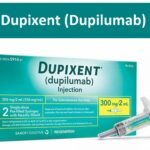Prucalopride (Motegrity) is a drug available as oral tablets. It is used in the treatment of patients with chronic idiopathic constipation.
Prucalopride (Motegrity) acts on the intestinal serotonin receptors (5-HT-4 receptors) and relieves constipation via the following mechanisms:
- It increases gut motility by increasing the peristaltic activity of the intestines.
- It increases intestinal fluid secretion
Unlike Tegaserod (Zelnorm) and Cisapride, which have an affinity for 5-HT-1 and 5-HT-2 receptors, Prucalopride (Motegrity) is highly selective.
It increases colonic contractions and relieves constipation with minimal extra-intestinal side effects.
Prucalopride (Motegrity) Uses:
Prucalopride is indicated in the treatment of adults with chronic constipation without any underlying cause (CIC – chronic idiopathic constipation).
It may also be used as an off-label treatment in patients with opioid-induced constipation and constipation caused by other medications.
Prucalopride (Motegrity) Dose:
Motegrity is available as:
- 1 mg tablets that are whitish in color, labeled as PRU-1, and
- 2 mg tablets that are pinkish in color, labeled as PRU-2
The usual recommended dose in otherwise healthy adults is 2 mg once daily with or without food. Some individuals prefer taking it with food to lessen the side effects associated with it.
It is not recommended for children who are younger than 18 years of age.
In case of overdosage, patients may develop severe diarrhea. These patients may develop electrolyte abnormalities, which should be corrected with adequate fluid and electrolyte replacement.
Other symptoms of Motegrity overdosage include headache, nausea, vomiting, and abdominal pain.
Prucalopride is not recommended for the treatment of constipation in children. Likewise, elderly patients may be susceptible to the side effects of the drug, possibly because of decreased renal clearance.
Such patients should be initiated on a low dose, and the dose should be titrated up if well tolerated.
Prucalopride (Motegrity) Use in Kidney and Liver Diseases:
In patients with mild to moderate kidney or liver impairment, no dosage adjustment is recommended. However, in patients with severe renal impairment, the usual dose is 1 mg once daily with or without food.
Severe renal impairment is defined as a CrCl of less than 30 ml/minute.
No dosage adjustment is required in patients with liver disease or hepatic impairment.
Prucalopride (Motegrity) Use in Pregnancy:
Data regarding its use in pregnant and lactating mothers is not sufficient to make any recommendations.
However, it is generally advisable not to use it during pregnancy, especially during the first few months of organogenesis.
Similarly, it is not recommended for use in nursing mothers because of a lack of adequate data. However, it has been observed to be excreted in human milk and should be avoided.
Prucalopride (Motegrity) Contraindications:
It is contraindicated (Avoid) in individuals who have any of the following conditions:
- Patients who are allergic to it. Allergic reactions may manifest as shortness of breath, hypotension, urticaria, swelling of the face, and shock
- Patients with an underlying gastrointestinal condition, such as:
- Intestinal perforation
- Intestinal Obstruction
- Ileus
- Toxic megacolon
- Inflammatory Bowel Diseases (Crohn’s disease and Ulcerative Colitis)
In addition, although not contraindicated, it must be used with extreme caution in patients with depression and anxiety.
These patients must be observed for suicidal behaviors, thoughts, and ideation. The caregivers must be asked to report any new behavioral symptoms and stop the drug immediately if the symptoms of depression and anxiety worsen.
Prucalopride (Motegrity) Side effects:
In clinical trials, the most common side effects of Motegrity, which were present in 2% or more of the participants in the study, were:
Side effects | Motegrity | Placebo |
| Headache | 19% | 9% |
| Abdominal Pain | 16% | 11% |
| Nausea | 14% | 7% |
| Diarrhea | 13% | 5% |
| Abdominal Distension | 5% | 4% |
| Dizziness | 4% | 2% |
| Vomiting | 3% | 2% |
| Flatulence | 3% | 2% |
| Fatigue | 2% | 1% |
Other less common side effects of Motegrity include:
- Abnormal gut sounds
- Increased Urinary frequency
- Loss of appetite
- Migraine headache
Diarrhea:
Diarrhea is the most common effect (or side effect) of Prucalopride. Diarrhea was seen often during the first few days of starting treatment.
2/3rds of the patients developed diarrhea during the first few days. However, it was self-limiting in most cases. Diarrhea settled in more than half of the patients within the first few days.
Severe diarrhea occurred in 1.8% of the patients who were in the treatment arm vs 1% in the placebo arm.
Headache:
The headache usually occurs in high doses. In the clinical trials, the headache was noticed in patients who were on a 2 mg dose and occurred during the first two days.
The headache resolved within the first few days of treatment.
Insomnia and a generalized feeling of being unwell were reported by some of our patients when treated with Motegrity.
Prucalopride (Motegrity) Monitoring Parameters:
Monitor the patients for symptom relief, loose stools, electrolyte imbalance, suicidal ideation, and symptoms of depression.
Prucalopride (Motegrity) Mechanism of Action (MOA) [Ref]:
Prucalopride (Motegrity) is a serotonin receptor activator. It acts on the 5-HT-4 receptors present in the colonic and intestinal luminal cells.
Activation of these receptors enhances the peristaltic activity of the colon, propagating the food forwards, enhancing bowel motility, and relieving constipation.
In vitro studies, it has little effect (<150 times less specific) on 5-HT-2A, 5-HT-2 B, 5-HT-3, Motilin, or CCK receptors.
It also activates the cholinergic receptors, thereby softening the stools and increasing gut motility. It increases the gut motility starting from the proximal colon to the anal sphincter.
It increases colonic motility within the first 12 hours and reduces the transit time by 12 hours from a baseline of 65 hours.
Effect on QT Interval:
Even in supranormal (supratherapeutic doses), it has not been shown to increase the QT Interval.
Bioavailability:
- >90% (a high-fat meal does not affect the bioavailability of the drug)
Peak Plasma Concentration:
- 2 to 3 hours of administration
Excretion:
It is primarily excreted via the kidneys. However, non-renal excretion occurs in up to 35% of the patients.
Prucalopride Drug Interactions:
It increases the plasma concentrations of Erythromycin. It has no other relevant drug-drug interactions.
The following drugs were studied in combination with Prucalopride, but no significant changes were observed in the drug levels:
- Digoxin
- Paroxetine
- Warfarin
- Oral Contraceptives
Ketoconazole, when co-administered with Prucalopride, increased its plasma levels by 40%. However, it does not seem to have any clinical implications as per the manufacturer. The dose may be reduced in side effects from developing.
In addition, when given in combination with the following medications, monitoring for side effects is recommended:
- Fosfomycin
- Levosulpraid
- Opioids or opioid agonists
- Anticholinergics
- P-glycoprotein/ABCB-1 Inhibitors
Prucalopride (Motegrity) Brands and Price:
International Brands Available [Ref]:
| Prucalopride Brand | Price Per 1 mg Tablet in USD | Price Per 2 mg Tablet in USD |
| Resotran | $ 3.37 | $ 5.09 |
| Motegrity | $ 17.36 | $ 15.51 |
| Constinon | $ 15.4 | $ 15.4 |
| Prucasoft | $2.64 | $ 3.76 |
| Resolor | $3.80 | $ 3.50 |
| P-Pride | $ 0.20 | $ 0.20 |
- Premium Ingredients: Our tea blend features high-quality Berberine, aromatic Oolong, and refreshing Mint, all organicall…
- Mint Flavored: Enjoy the cool, crisp taste of mint that perfectly complements the robust flavors of Berberine and Oolong…
- Unsweetened with Zero Calories: Crafted for those who appreciate the natural flavors of tea, our blend is completely uns…
- UNBLOCK YOUR SYSTEM: MiraLAX, an osmotic laxative, works naturally with the water in your body to hydrate, soften, and e…
- NO HARSH SIDE EFFECTS: MiraLAX helps relieve your occasional constipation without causing gas, bloating, cramping, or su…
- #1 PHYSICIAN RECOMMENDED: Since going on the market as an OTC laxative in 2007, MiraLAX has been the #1 Physician Recomm…
- Includes: One (1) 50-count box of Dulcolax stimulant laxative comfort-coated tablets
- Dependable constipation relief: Dulcolax tablets reactivate your natural gut rhythm* for effective morning constipation …
- Works fast: Dulcolax provides constipation relief in as little as six to 12 hours, starting with just one tablet

- From the Makers of MiraLAX: MiraFAST Soft Chews is a saline laxative that provides fast constipation relief that you can…
- Quick and Gentle: Fast-acting relief from constipation in 30 minutes to 6 hours, giving you the freedom to tackle your b…
- No Cramps, No Stimulants: Formulated with magnesium hydroxide, MiraFAST Soft Chews works naturally with the water in you…









